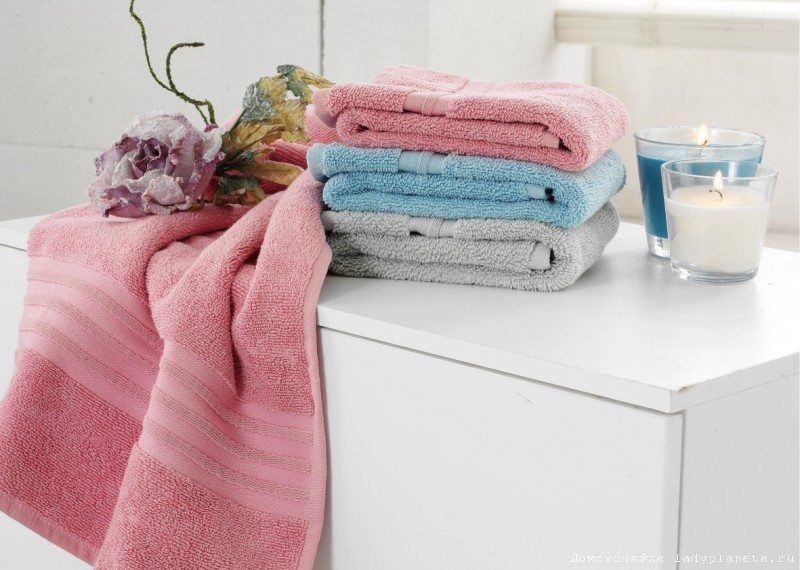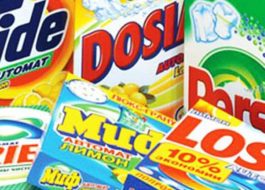How to wash a towel in a washing machine to keep it soft?
 Today, housewives who have a home assistant - an automatic machine - have practically forgotten what hand washing is. Modern washing machines have a large number of special modes that allow you to wash even items that require special care. A towel is a common household item that needs frequent cleaning. Most users throw it into the drum along with the rest of the laundry and start the economical wash cycle. This results in a loss of softness of the towels. Is it possible to wash products in a machine while maintaining the original properties of the fabric? We'll talk about how to make towels soft below.
Today, housewives who have a home assistant - an automatic machine - have practically forgotten what hand washing is. Modern washing machines have a large number of special modes that allow you to wash even items that require special care. A towel is a common household item that needs frequent cleaning. Most users throw it into the drum along with the rest of the laundry and start the economical wash cycle. This results in a loss of softness of the towels. Is it possible to wash products in a machine while maintaining the original properties of the fabric? We'll talk about how to make towels soft below.
Making the towel soft
To ensure that towels that touch your skin every day remain pleasant to the touch, you need to properly care for them. Terry fabric is quite capricious and requires special, careful treatment during washing. Here are some basic recommendations that will help you properly wash a terry towel in an automatic machine.
- It is best to use liquid washing gel; such a detergent will maintain fluffiness and prevent the fibers from becoming deformed.
- It is recommended to wash towels using modes that involve completely filling the drum with water and heating the liquid to 40°C - 60°C. After the main program, turn on the “Extra rinse”.
- Along with the laundry, load the balls used for washing down outerwear into the drum - they will excite the fibers, preventing them from pressing.
- It is better not to use fabric softeners and bleaches when washing towels.Products are not washed out of terry fibers well enough and deform the fibers.

It is advisable to completely avoid ironing items, or smooth them using hot steam, hanging a towel on a rope, or holding it suspended.
Another reason that leads to loss of softness of towels is hard water used when washing. Everyone knows that in most regions of Russia, the water pipes carry water of inadequate quality, therefore, in order to preserve the laundry being washed, experts recommend installing filters either at the entrance to the apartment or in front of the inlet hose of the washing machine. This measure will avoid the formation of scale and sediment on the machine parts, as well as give the towels softness.
If installing a filter is not possible, soften the water with proven means: salt, baking soda, vinegar solution. Along with the splendor of the terry pile, they also guarantee the maintenance of the color of the product.
Why does fabric become stiffer after washing?
After using a terry towel for some time, you will notice that the fibers of the product have become less fluffy, thickened and lost their shape a little. This can easily be explained by the following mistakes made by housewives:
- the use of regular washing powder when washing, instead of a liquid gentle detergent;
- use of hard, unsoftened water;
- washing or rinsing the product in an overloaded drum;
- using an economical mode for cleaning towels, which involves adding a small amount of water to the tank;
- smoothing terry cloth with the soleplate of an iron.
Experts warn that the fabric should only be smoothed with hot steam.
 If you avoid the mistakes described above and initially try to maintain the quality of the product so that it is soft and fluffy, you can avoid turning a pleasant towel into a “hard” fabric.
If you avoid the mistakes described above and initially try to maintain the quality of the product so that it is soft and fluffy, you can avoid turning a pleasant towel into a “hard” fabric.
The best fabric softeners
At a time when the market was not replete with various means for washing all kinds of fabrics, housewives had to invent their own ways to make towels soft. These methods turned out to be so effective that they are still used today.
- Salt. Softens the fabric well. You can use either regular table salt or a special one designed for automatic machines. You can pour the product into the washing machine tray, for this 3 tbsp. tablespoons of salt are mixed with the powder, or pour the saline solution (the same three spoons diluted in 200 ml of water) directly into the tank.
- Vinegar. Pour 0.5 cups of 9% vinegar solution into the conditioner-rinse aid tray. After washing in the washing machine, fluffy towels will be very soft. Additionally, vinegar will help cope with unpleasant odors.
- Soda. Three tbsp. spoons of the product are poured into the washing machine drum. Baking soda will help soften hard water in the system.
- Vinegar plus soda. 0.5 cups of nine percent vinegar is poured into the rinse aid tray, half a glass of soda is poured into the drum of the unit. This softening method is especially suitable when washing light-colored items - baking soda and vinegar will also have a bleaching effect.

It is also possible to make a special homemade towel rinse. Mix a glass of water, the same amount of baking soda and six glasses of nine percent vinegar in a container. Wait until the foaming process is complete and pour six more glasses of water into the container.To add aroma to the conditioner, drop essential oil (peach, grape, etc.) into the solution. The mixture made is used instead of store-bought rinse aid if necessary.
We return the former softness to an old towel
If your favorite towel has lost its appearance and has begun to look unpresentable, do not rush to throw away the product. You can try to revive the thing using proven folk methods. Dissolve table salt in a bowl of water. For five liters of water add 2 tbsp. spoons of salt. Let the product sit in the resulting solution for half an hour. Then load the towel into the washer, running the standard program.
In case of fading of the fabric, appearance of a dark shade or stubborn dirt, soak the textile in a water-salt solution for 10 hours, while adding a little ammonia to the basin. Ammonia is made at home by mixing the ingredients in the following proportions: 1 liter of water, tbsp. a spoonful of table salt and a teaspoon of ammonia.
Interesting:
Reader comments
- Share your opinion - leave a comment
Categories
Washing machine repair


For buyers

For users

Dishwasher

















Add a comment